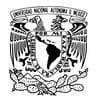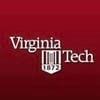Explore all the information on
Poultry egg quality
Egg quality defines those characteristics of an egg that affect consumer acceptability and preference. Components of quality include shell quality and interior egg quality for shell eggs, and interior egg quality for further processed eggs. The quality of the egg once it is laid cannot be improved. Hence, its maintenance is mostly a preventive process. Egg quality is influenced by several factors including rearing, temperature, humidity, handling, storage, and egg age. Shell quality: There are five major classes of shell defects: integrity, texture, shape, color, and cleanliness. Internal egg quality involves functional, aesthetic and microbiological properties of the egg yolk and albumen. The proportions of components for fresh egg are 32% yolk, 58% albumen and 10% shell. Regarding exterior egg quality, the shell of each egg should be smooth, clean and free of cracks. The eggs should be uniform in colour, size and shape.
1. Introduction Fatty acids, especially essential fatty acids, are gaining importance in poultry feeding systems not only for improving the health and productivity of birds, but also because of our health-conscious society that prefers properly balanced diets to minimize adverse health issues [1–3]. Among various fatty acids, omega-6 (ω-6) and omega-3 (ω-3) fatty acids are proving indispensable in a properly maintained ratio for numerous biological [4,5],...
Comments : 0
Recommendations: 0
INTRODUCTION The intense international trade of animals and animal products facilitates the spread of Salmonella spp., making salmonellosis an international public-health subject, responsible for serious economic losses to the poultry industry and governments. Although humans can become infected by Salmonella spp. through a wide range of food products, poultry meat and eggs are among the most frequently implicated sources of human Salmonella outbreaks (Gast, 2013)....
Comments : 0
Recommendations: 0
Introduction Nowadays, food is eaten to satisfy hunger, to provide the necessary nutrients to us humans and also to prevent nutrition-related illnesses in order to improve physical and mental well-being (SIRÓ et al., 2008). However, human nutrition has been characterized by excessive intake of sodium, cholesterol, omega-6 fatty acids and calories, and by low intake of omega-3 fatty acids, fibers, vitamins, antioxidants and trace minerals. These dietary and nutritional...
Comments : 0
Recommendations: 1
Novus International in collaboration with Kasetsart University in Thailand recently launched the Eggshell Grading and Scoring System (eGss). Dr. Yuwares Ruangpanit explains how the eGss System is different from other scoring systems in the market, its benefits, and more in this video interview...
Comments : 1
Recommendations: 1


Veterinary APIs Market Update: Price Trends & Key Insights – February 2025
Suggested link
What if we can enrich the embryo already with a quickly available energy source to better secure hatching and the first days in the life? This is possible by feeding the broiler breeder hen with a source of creatine. Creatine might ring a bell to many, as taking creatine as a supplement is very popular among athletes to gain muscle, enhance strength and improve exercise performance. Creatine gives muscle cells the capacity to produce more energy by recycling energy poor...
Comments : 2
Recommendations: 6
INTRODUCTION Hemp ( Cannabis sativa L.) is an annual herbaceous plant belonging to the family Cannabinaceae 1 , traditionally grown for fiber and seed production. Whole hemp seed contains approximately 25% crude protein, 33-35% oil and 34% carbohydrate, in addition to a broad range of vitamins and minerals 2-4 . Hemp seed oil contains 75-80% polyunsaturated fatty acids (PUFA), including 60% linoleic acid and 17-19% α-linolenic acid...
Comments : 0
Recommendations: 0
I. INTRODUCTION Commercial laying hens have been successfully selected for increasing production cycle lengths. Rather than being depopulated at 60 to 70 weeks of age, or being moulted to allow for additional production cycles, the egg industry has moved towards cycle lengths of 80 weeks or even longer. Selection for increased persistency of production and livability, skeletal health, and a slow rate of increase...
Comments : 0
Recommendations: 2
I. INTRODUCTION Calcium and phosphorus are two minerals of great concern to poultry nutritionists as a result of the relatively large quantities needed in the diet, and the adverse effects on bone formation, shell quality, and overall performance when inadequate amounts of these minerals are supplied. It is further difficult to discuss calcium supply in poultry diets without referring to phosphorus, since the...
Comments : 0
Recommendations: 1


Sustainability and profitability in animal production: a necessary and possible balance
Suggested link
In the past few decades in South East Asia (SEA), with a moderate increase in the layer hen population, egg production rate and lifespan have greatly improved. However, when compared with the global egg production per capita (less than 7 vs. more than 10), there is still a significant opportunity to further increase egg production in this area. In SEA, the top challenges for the layer industry are egg quality and egg production rate, especially for old flocks. In old layers, especially after...
Comments : 0
Recommendations: 1
INTRODUCTION The quality of egg depends on physical make-up and chemical composition of its constituent namely egg shell, albumen and yolk. Chemical compositions are important in egg product industry as the demand of liquid eggs, frozen eggs, egg powder and yolk oil increases (Song et al., 2002). However; significant percent loss occurs in albumen and yolk chemical composition and pH by long storage periods (Bufano, 2000). Environmental factors such as temperature, humidity, and...
Comments : 0
Recommendations: 1


Digestibility of amino acids in hydrolyzed feather meal, flash dried poultry protein, poultry meal, and meat and bone meal fed to broiler chickens and pigs
Suggested link
INTRODUCTION The Food and Agriculture Organization (FAO) forecasts that the human population will increase by 30% by 2050 (FAO, 2019) with corresponding increase in demand for food. Animal protein, the largest component of human food is entirely dependent on livestock production channels as its source. Over 70% of the cost of livestock production is feed, and the second largest component and cost of feed is the crude protein, a segment that has been challenged for its...
Comments : 0
Recommendations: 0
by Sam Shafer
The best part of brunch? Rich, melt-in-your-mouth egg yolks.
Egg yolks are nutrient-dense and the main source of an egg’s flavor. Hens make egg yolks of different sizes, but larger yolks can mean that a hen has a lower feed efficiency—the ability to convert what it eats to egg yield.
Luckily, new genomic sequencing tools may make it possible to devise new breeding strategies to improve egg yolk size without requiring more...
Comments : 0
Recommendations: 0
INTRODUCTION Soybean meal (Glycine max) is a widely used ingredient in livestock feed for its excellent protein content. Its production in Mexico is for use in the livestock industry, and is limited by the small scale of domestic soy bean production. Only 3 % of soybean meal demand is met by domestic production, the remaining 97 % coming from imported raw material(1). Despite its excellent protein content, its antinutritional factor content means soybean meal can only be used as...
Comments : 0
Recommendations: 1
Introduction Genetic companies using new advances in genetic engineering are working to achieve high-persistence brown and white egg layer hybrids capable of producing more than 500 eggs in a 100-week lay and molt-free period. 1-The quality of the shell is the main reason for a producer to discard a flock of layer. 2-The posture drop is the second. - The most important nutritional strategy is bone health during rearing and all production through the...
Comments : 2
Recommendations: 4
Introduction Poultry eggs are biological structures intended by nature for reproduction and are highly versatile foods containing many essential nutrients as they support life during embryonic growth (Abanikannda et al., 2007). Chicken eggs are familiar, nutritious, economical and easy to prepare food, as they provide balanced sources of nutrients for humans of all ages (Matt et al., 2009). Moreover, their high quality protein, low caloric value and easy of digestibility make...
Comments : 0
Recommendations: 0
INTRODUCTION Tryptophan (Trp) is an essential amino acid and third limiting in typical commercial corn-soybean diets for white egg-laying hens (Russell and Harms, 1999). Tryptophan is primarily used for protein synthesis to maintain egg production but also plays a role as a precursor of serotonin which is synthesized to melatonin to regulate sleep, appetite, and stress responses. In addition, Trp can be converted to the B-vitamin niacin through the kynurenine pathway (Rogers and...
Comments : 0
Recommendations: 1
...
Comments : 0
Recommendations: 0
I just want to share our experience on what we are going through in our poultry birds recently. The feed we buy to feed our birds now not so good because after consulting this feed they usually drop in egg laying and this has been going on for some time. Question: what do suggest is the cause ? Question: what can we do as Farmer to improve our bird egg laying. Question: what are the things we should do that we are not doing? Mostly all Farmer in Nigeria now are...
Comments : 1
Recommendations: 0
Introduction Crossbreeding is a method of genetic improvement [1]. It produces chickens that will be better in different economic traits, such as growth rate, feed efficiency, age at first egg, and carcass characteristics [1,2]. The superiority of crossbreeds over purebreeds in some of the above-mentioned productive and reproductive traits was confirmed by many scholars [3]. Many scholars evaluated the assessment of reciprocal crossbreeds for different breeds in different...
Comments : 0
Recommendations: 0
1. Introduction Under normal circumstances, excessive free radicals are scavenged by body enzymatic and non-enzymatic antioxidants, but oxidative stress can occur when the amount of oxidant production surpasses the capacity of the body’s antioxidant system [1,2]. Different aspects of avian productive and reproductive performances, such as egg production rate and egg quality traits, as well as fertility and hatchability may be adversely influenced by oxidative...
Comments : 0
Recommendations: 1






















.jpg&w=3840&q=75)















